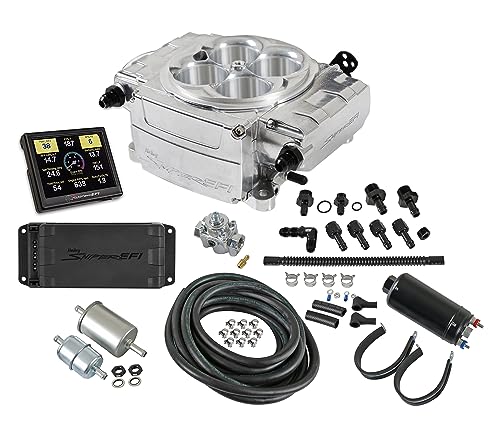There’s a certain magic to a classic car that modern vehicles can’t match. The long hoods, the analog feel, the mechanical honesty—driving one is like being part of a machine instead of riding inside a touchscreen on wheels.
But there’s also no denying this truth: old cars weren’t built for the way we drive today.
Traffic is faster. Roads are busier. Drivers are more distracted. And if you want to put real miles on vintage steel—not just trailer it to cars and coffee—your car has to earn it. The good news is, you can make a classic safer, smoother, and more enjoyable without killing its character. These upgrades don’t erase history—they preserve it by keeping your car on the road where it belongs.
Safety Upgrades
The first priority is simple—make sure the car can stop and survive modern traffic. Classic cars were engineered to the safety standards of their time, which means they came with drum brakes, weak crash protection, and lighting barely visible in daylight.
These upgrades bring peace of mind without changing the soul of the car.
1. Front Disc Brake Conversion– Stopping power that doesn’t fade when it gets tough
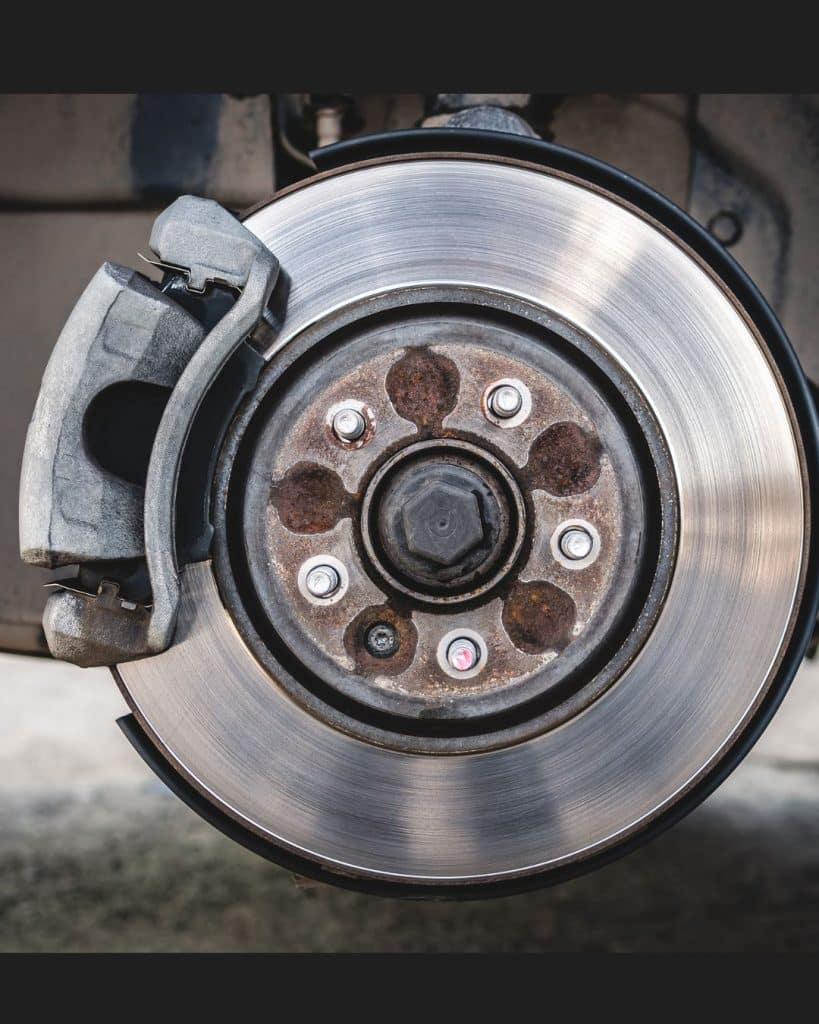
Modern cars stop faster than our classic cars, which means they need to stop hard too, or risk rear-ending that Civic that just slammed on its brakes. That’s why our first three items deal with the braking system.
Most classic cars came with front drum brakes, and they’re downright dangerous in modern traffic.
They fade under repeated use, pull unpredictably, and lose effectiveness in rain. A front disc conversion is one of the most natural, invisible, and essential upgrades you can make.
Kits are easy to install, retain a factory look, and dramatically improve stopping confidence without going full race-spec. It’s the smartest first step for any classic that still runs drums.
They can be really cheap, but just make sure to verify that it won’t alter your suspension geometry.
2. Power Brake Booster– Turn panic stops into predictable stops
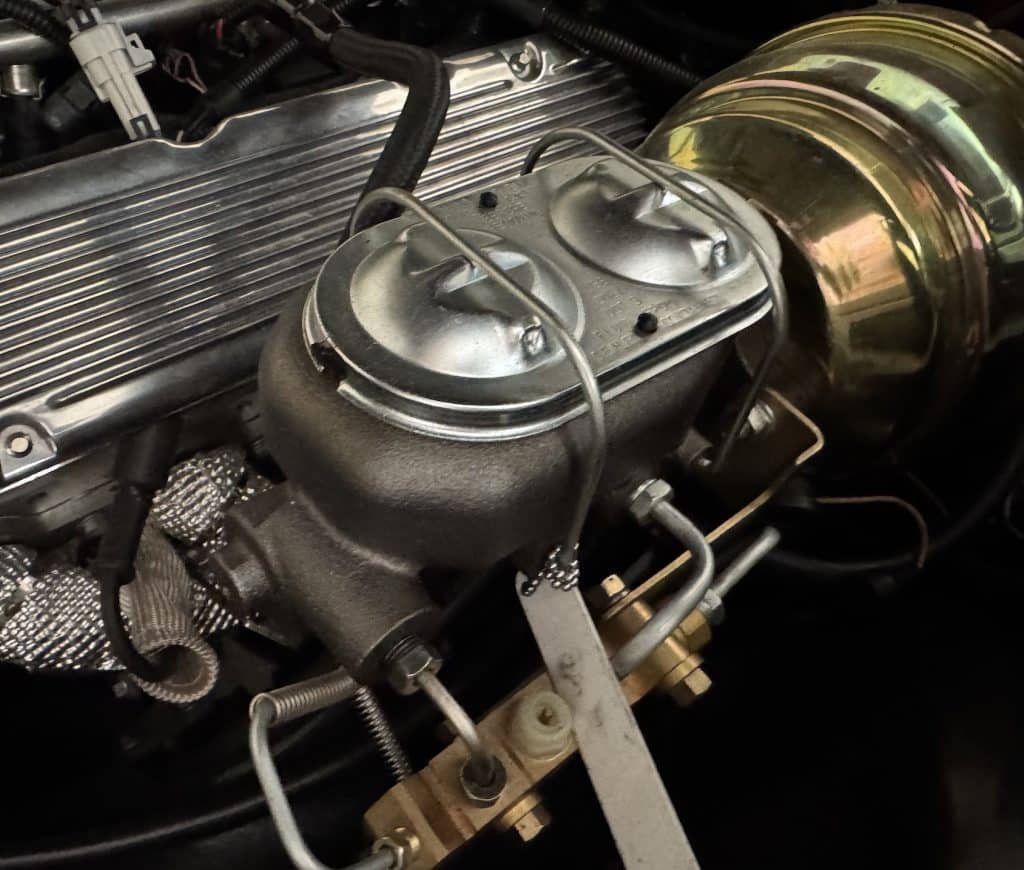
Even with disc brakes, manual brake systems demand too much pedal effort for today’s driving. A power brake booster doesn’t change your car’s appearance, but it transforms how it feels behind the wheel.
The pedal becomes smoother, more responsive, and easier to modulate. Whether you’re slowing from 70 on the highway or easing to a stop sign downtown, this upgrade simply makes the car feel right.
3. LED Lighting Upgrade– See and be seen—without blinding anyone
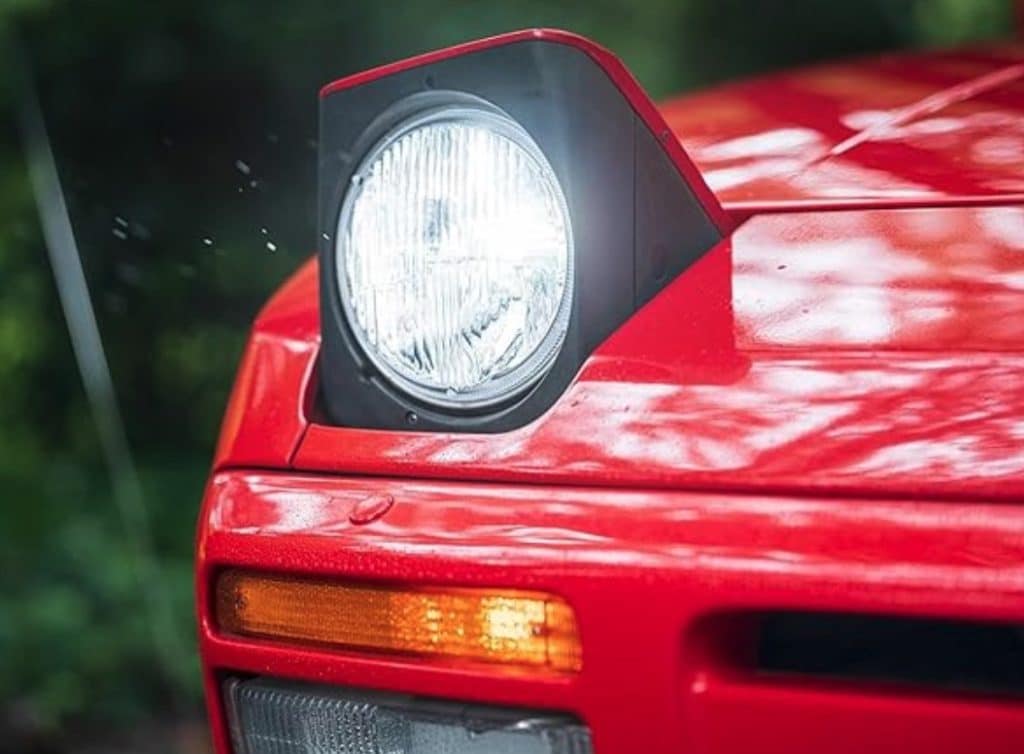
Classic headlights look great but perform terribly. They’re dim, yellow, and disappear at dusk. Switching to LED sealed-beam replacements improves brightness and visibility dramatically while retaining a period-correct look.
Add LED conversion to taillights and brake lights, and you’re no longer invisible to distracted drivers. Best of all, this upgrade is totally reversible if you’re a restoration purist.
Holley makes a fantastic swap-in headlight that looks exactly like your old sealed beam lights… 👇
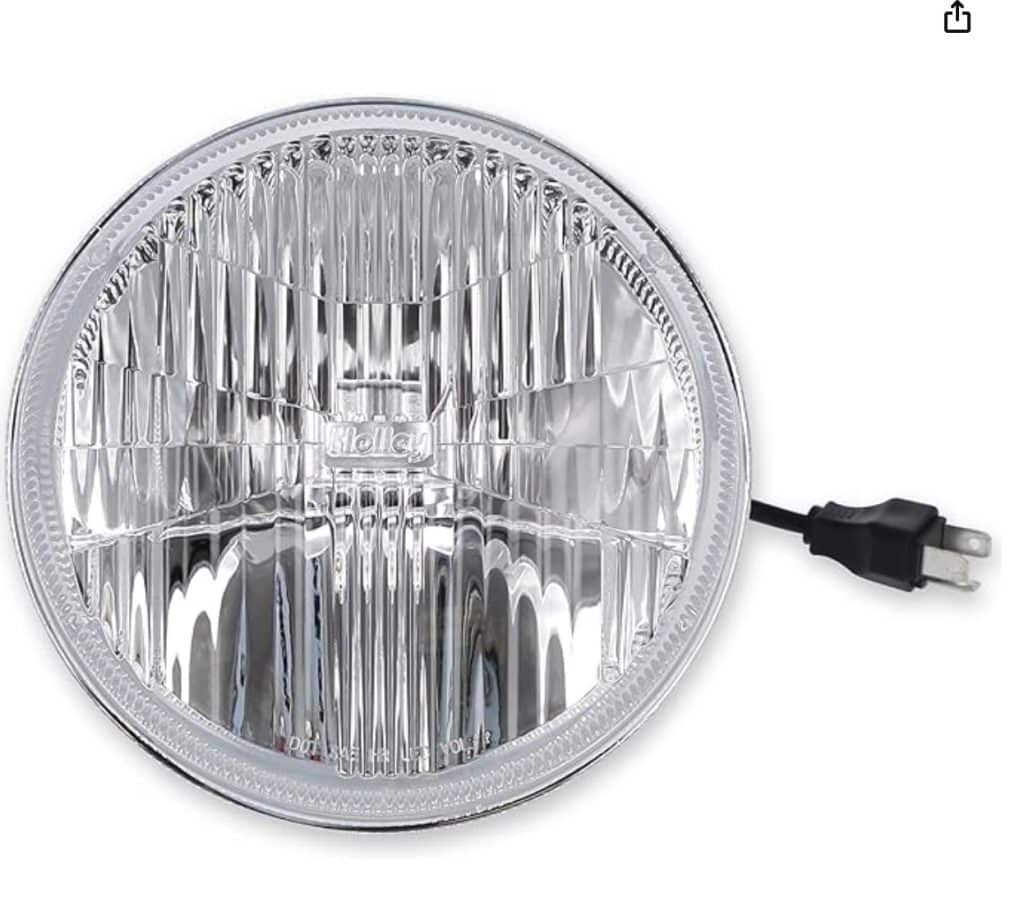
4. Three-Point Seat Belts: Factory lap belts were better than nothing—this is better than that
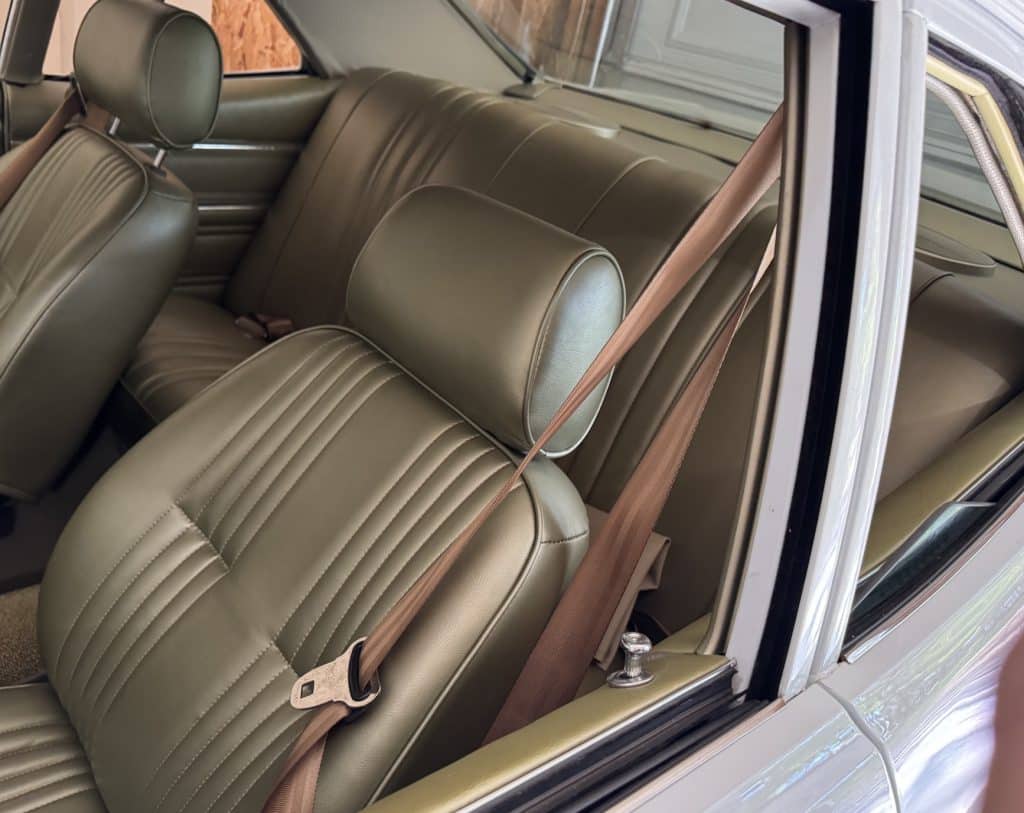
Many classics came with lap belts—or nothing at all—and while they capture nostalgia, they don’t capture you in a crash.
Three-point belts mount discreetly and restore a sense of security without spoiling the interior.
I’ve got kids, and for me, this upgrade is non-negotiable. It preserves life and comfort without changing the character of the car.
5. Dual-Reservoir Master Cylinder– Because total brake failure shouldn’t be an option
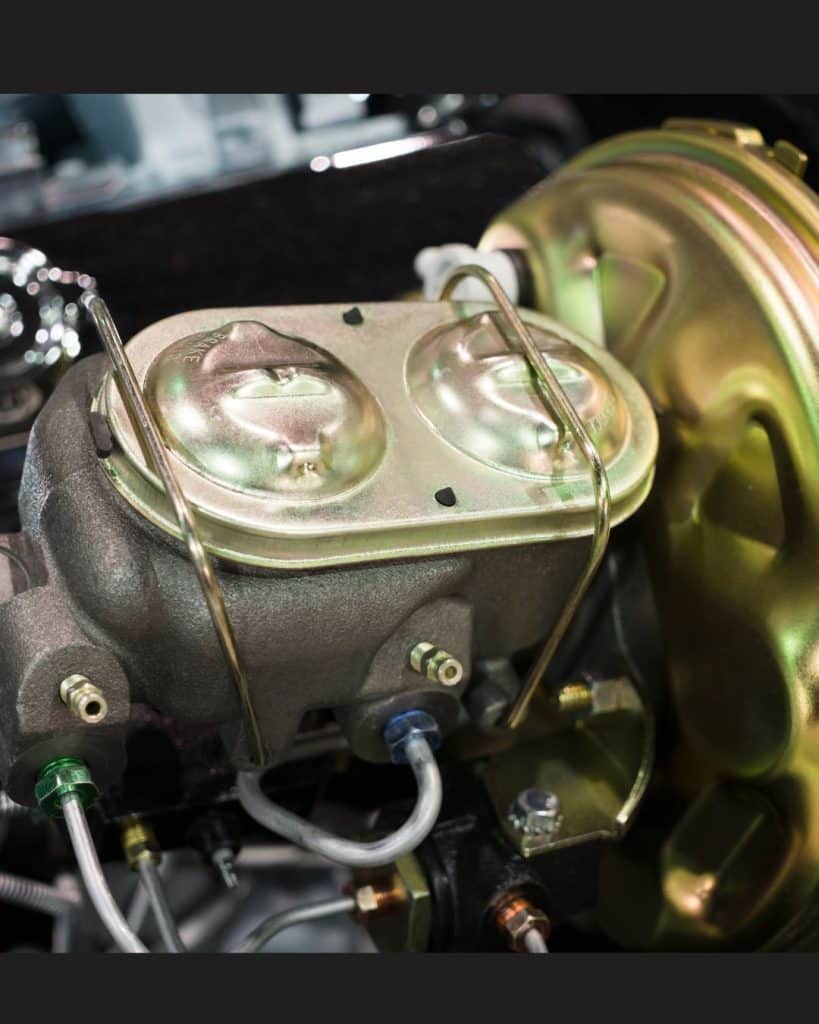
If your classic still has a single-pot master cylinder, you’re driving with a built-in gamble—one leak and you lose all braking.
Upgrading to a dual-reservoir master cylinder splits the front and rear circuits, so if one fails, you still have braking control.
It doesn’t change pedal feel or appearance much, but it’s one of the most important life-saving upgrades you can make.
Reliability Upgrades
A classic car shouldn’t make you wonder if you’ll get home every time you turn the key. These upgrades don’t change the character of the car—they just make it start, run, and behave like it should, every single time.
6. Electronic Ignition Upgrade – Goodbye points, hello dependability
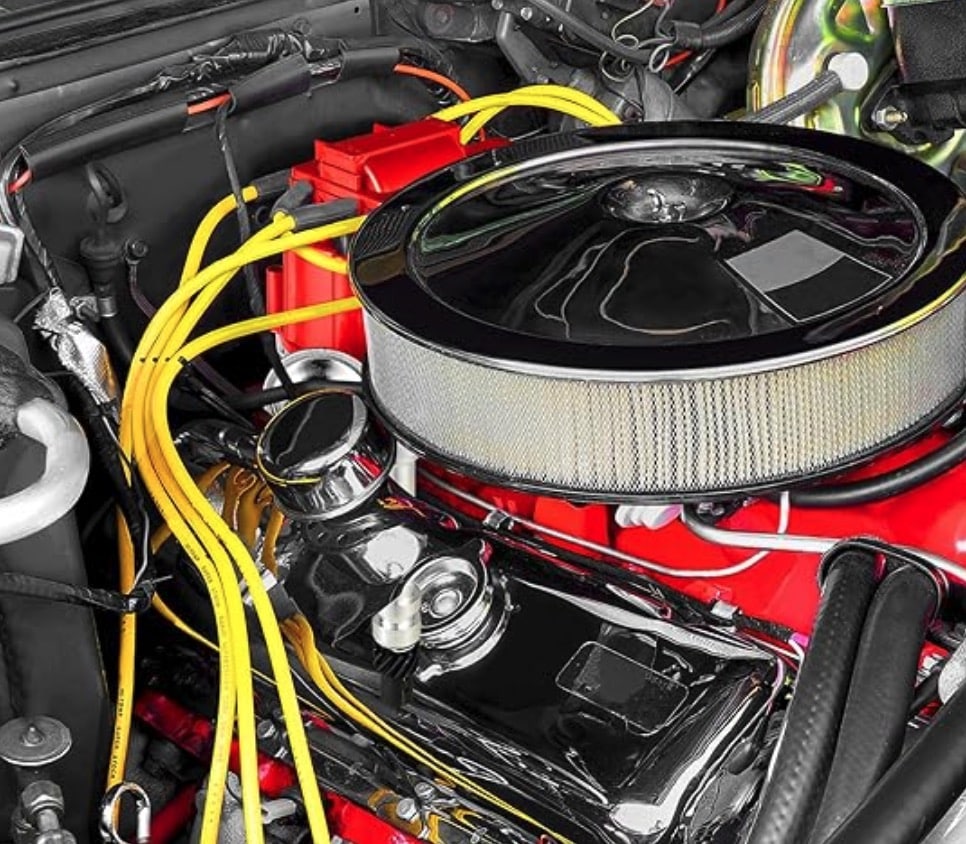
If your ignition system still relies on points, you’re driving with 1950s farm equipment technology. It works—until it doesn’t.
Upgrading to an electronic ignition module (like Pertronix) or an HEI system delivers smoother starts, consistent timing, and virtually zero maintenance.
It hides inside the distributor on most applications, so you keep the stock look under the hood. This is one of those upgrades you forget about—because you never have to mess with it again.
If you DO want to mess with it, make sure you keep extra points and a matchbook in the glove compartment just in case.
7. Aluminum Radiator – Beat heat soak and summer traffic
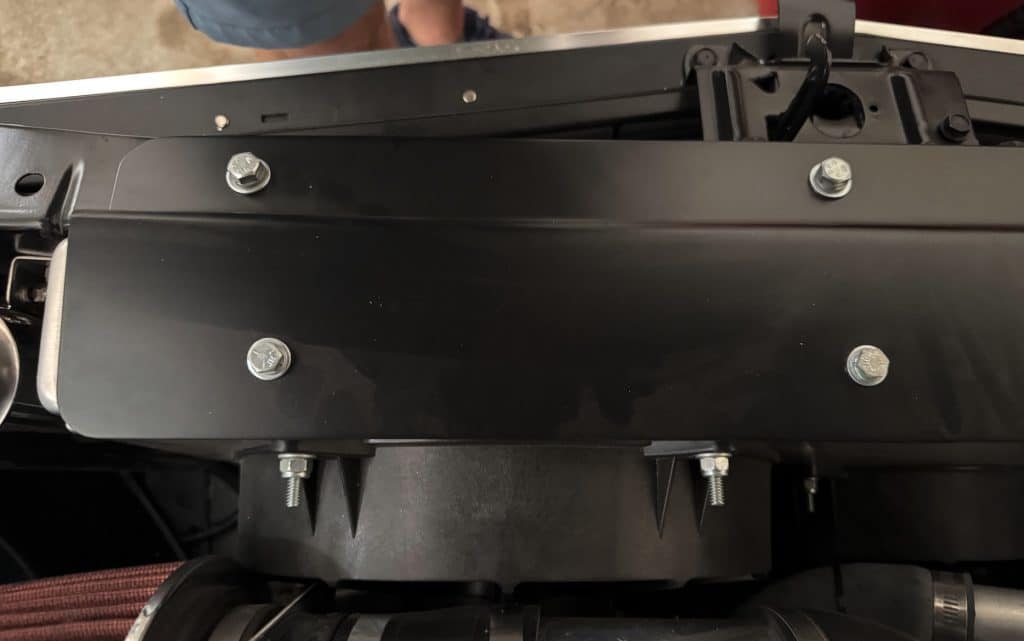
Overheating is the number one reason old cars get parked. Factory copper radiators were fine in 1968, but with today’s traffic and modern fuels, they struggle to keep temps under control.
An aluminum radiator cools better, weighs less, and bolts in cleanly on most classics.
Pair it with a good fan setup and you eliminate the biggest reliability issue old cars face—running too hot when it matters most.
8. Electric Fan – Stop overheating in traffic
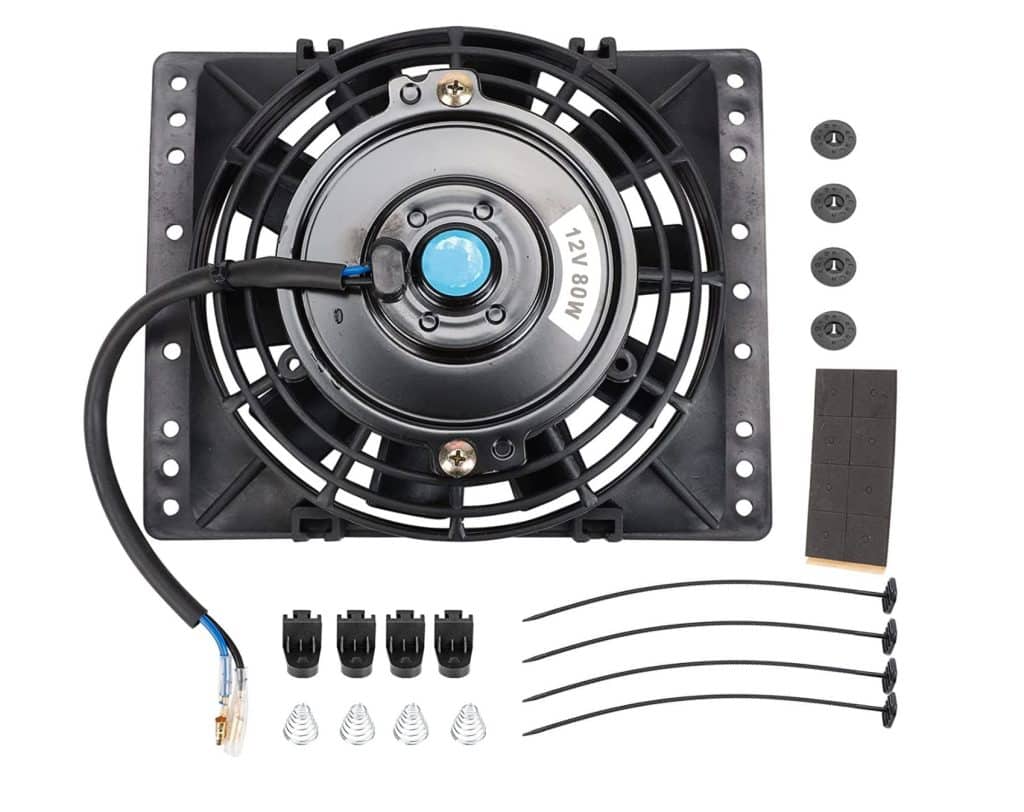
A mechanical fan works fine—as long as you’re always moving. But modern driving means stop-and-go, construction zones, and slow cruise nights.
An electric puller fan with a thermostatic controller keeps airflow steady even at idle, preventing heat soak.
It’s not a flashy upgrade, but it’s one that keeps your car from puking coolant at a red light. Your engine will thank you—and so will anyone stuck behind you.
They’re also DIRT CHEAP and easy to install.
9. High-Output Alternator – Modern power for modern demands
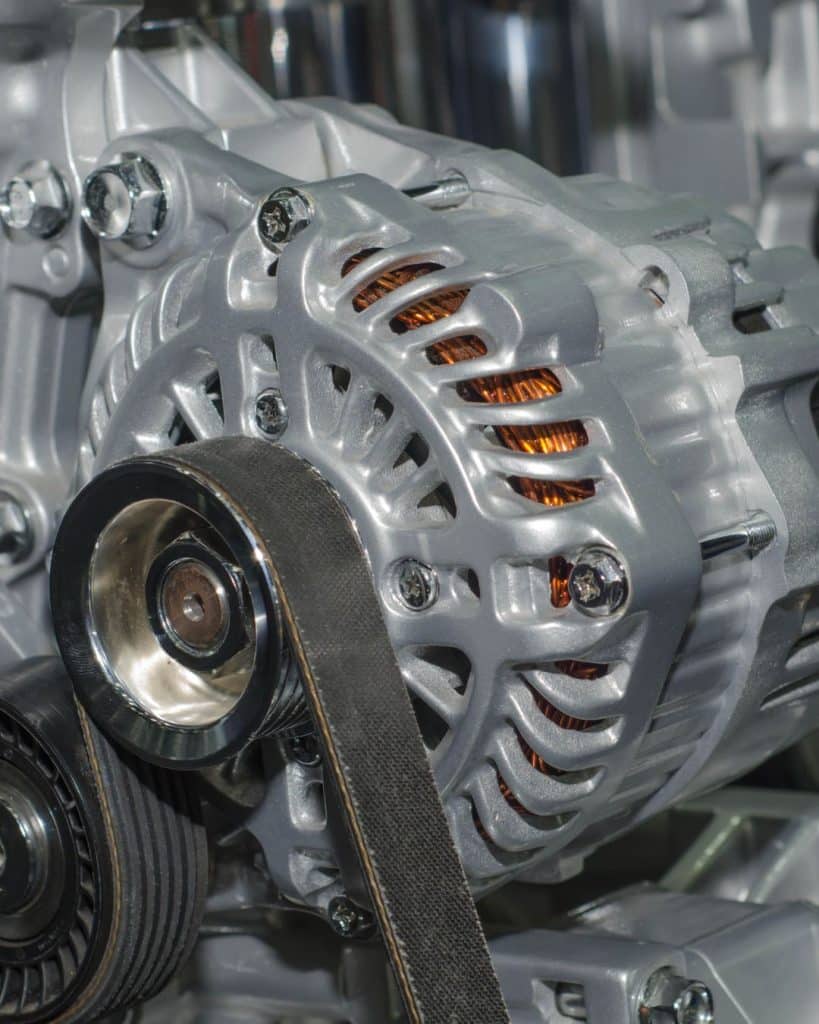
Original alternators put out around 35–60 amps. That was fine before electric fans, aftermarket gauges, better stereos, and EFI systems. Today, that output isn’t enough.
A high-amp alternator (100–140 amps) ensures clean voltage and prevents flickering lights or dead batteries at cruise nights.
This is especially important if you plan future upgrades—do it once and never worry again.
10. Mini High-Torque Starter – Hot starts solved
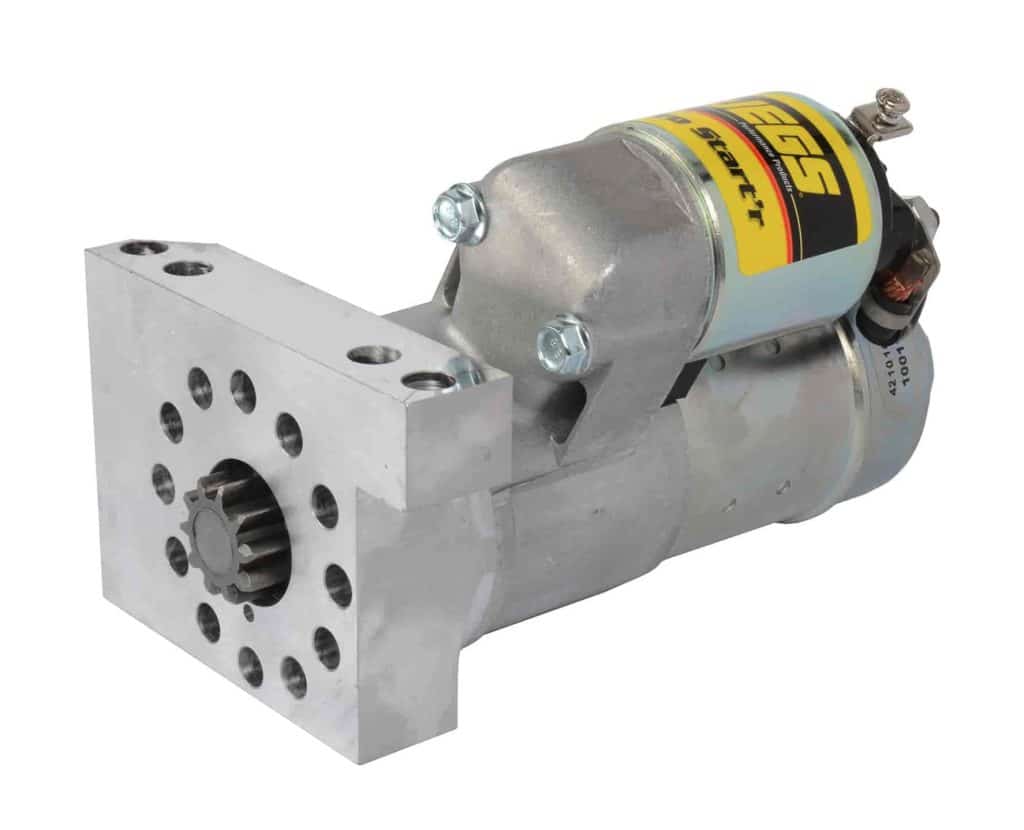
Heat soak can cause old full-size starters to struggle—especially on cars with headers. If your classic cranks slowly when hot, this is the fix.
Mini high-torque starters draw less current and spin faster, making hot starts reliable and frustration-free.
They’re small, light, and fit better around tight exhaust routing. Another invisible upgrade that just makes life easier.
Drivability & Power Delivery Upgrades
Power is great—but predictable power is better. These upgrades smooth out throttle response, improve fuel delivery, and make your classic feel less temperamental.
The goal here isn’t big horsepower gains—it’s drivability you can trust.
11. Fuel Injection Conversion (EFI) – Cold starts without the carb choke dance
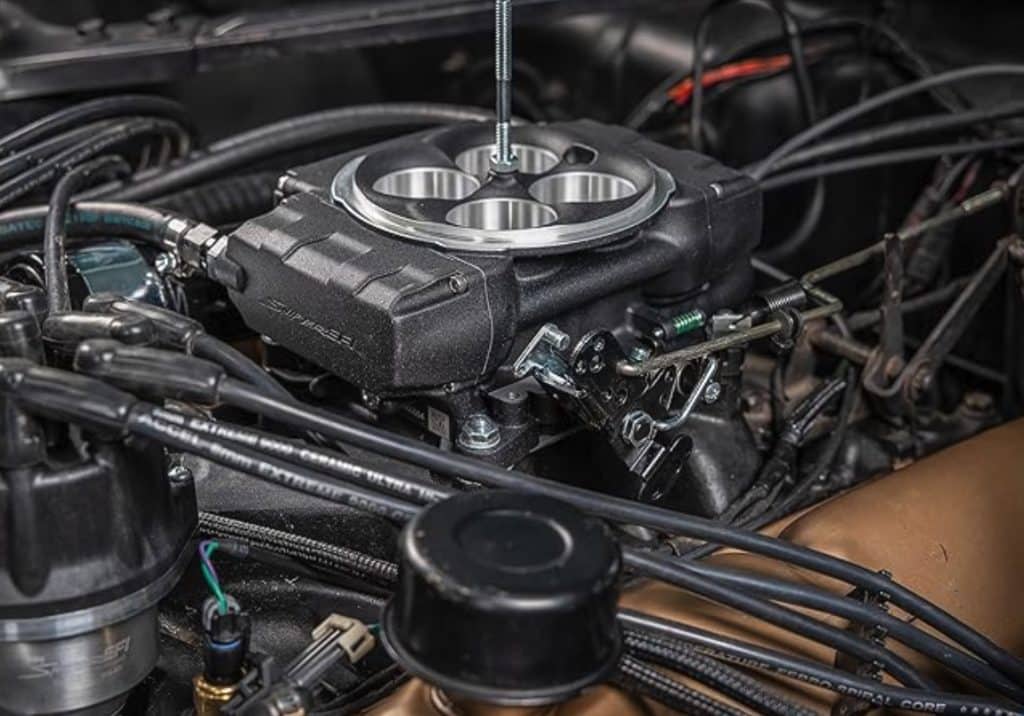
If you actually drive your classic on a regular basis, EFI will be one of the best upgrades you ever make.
A throttle-body EFI system replaces a carburetor while keeping a classic look, but it delivers modern consistency.
Better hot starts, smoother idle, automatic altitude correction, and no more messing with jets. It’s still old-school V8, just civilized.
12. Overdrive Transmission – Lower RPMs, longer drives
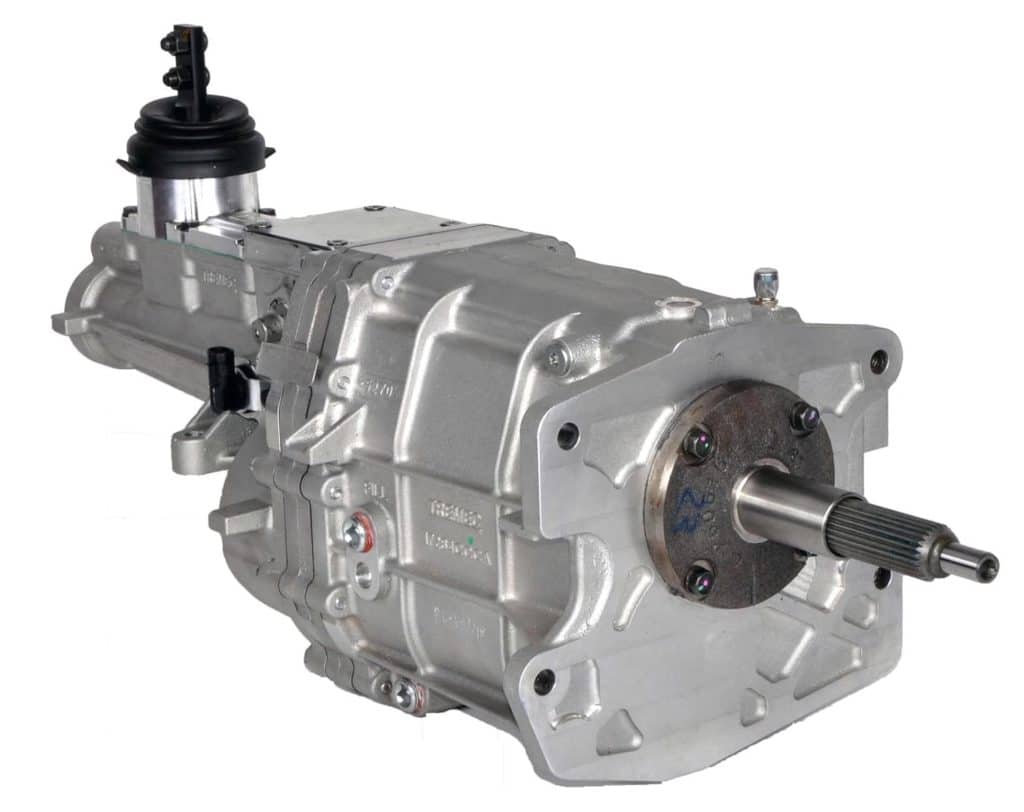
If your classic still runs a 3-speed automatic or 4-speed manual, highway RPM is probably through the roof.
That means heat, fuel waste, and noise. An overdrive transmission—like a 700R4, 200-4R, T5, TKO, or T56—drops cruising RPM by 30–40%.
You don’t realize how tiring a stock transmission is until you cruise at 75 mph with the engine barely working. This is the single best upgrade for long-distance driving.
13. Rear Gear Ratio Change – Match the car to the way you drive
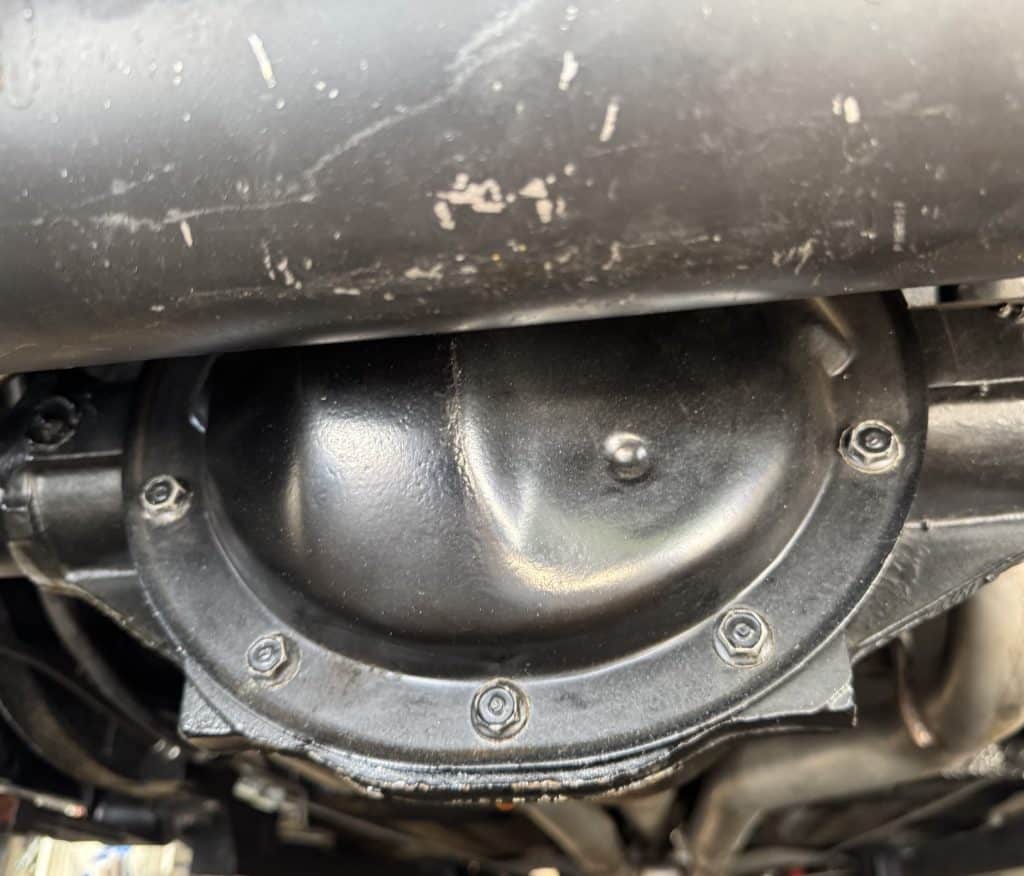
Gearing makes or breaks how a car feels. Too tall, and it feels lazy off the line. Too short, and it screams on the highway.
The right gear ratio wakes up a mild engine and brings the powerband where you actually drive.
If you’ve added overdrive, 3.42–3.73 gears hit a great balance for small-block street cars. Big-block torque monsters may like 3.23–3.55. This upgrade is all about feel—done right, it’s transformative.
14. Performance Carburetor (If You Stay Carb’d) – Not all carbs are created equal
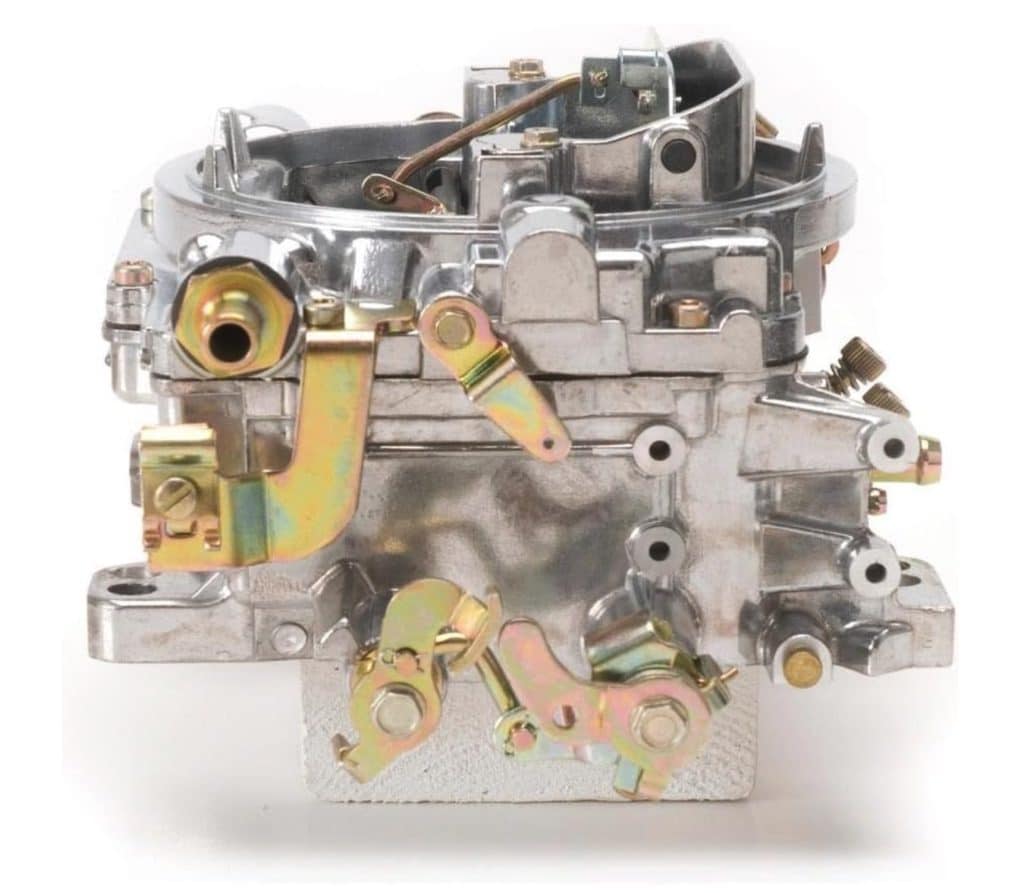
If you’re not ready for EFI, that’s fine—just don’t fight a worn-out carb that refuses to run right.
A well-sized, properly tuned Holley, Edelbrock, or Quick Fuel carb can make a classic run strong and smooth.
Skip the bargain-bin specials and invest in something you can tune. Most “carb problems” are really cheap-carb problems.
15. Exhaust System with Crossover Pipe – Torque, tone, and drivability
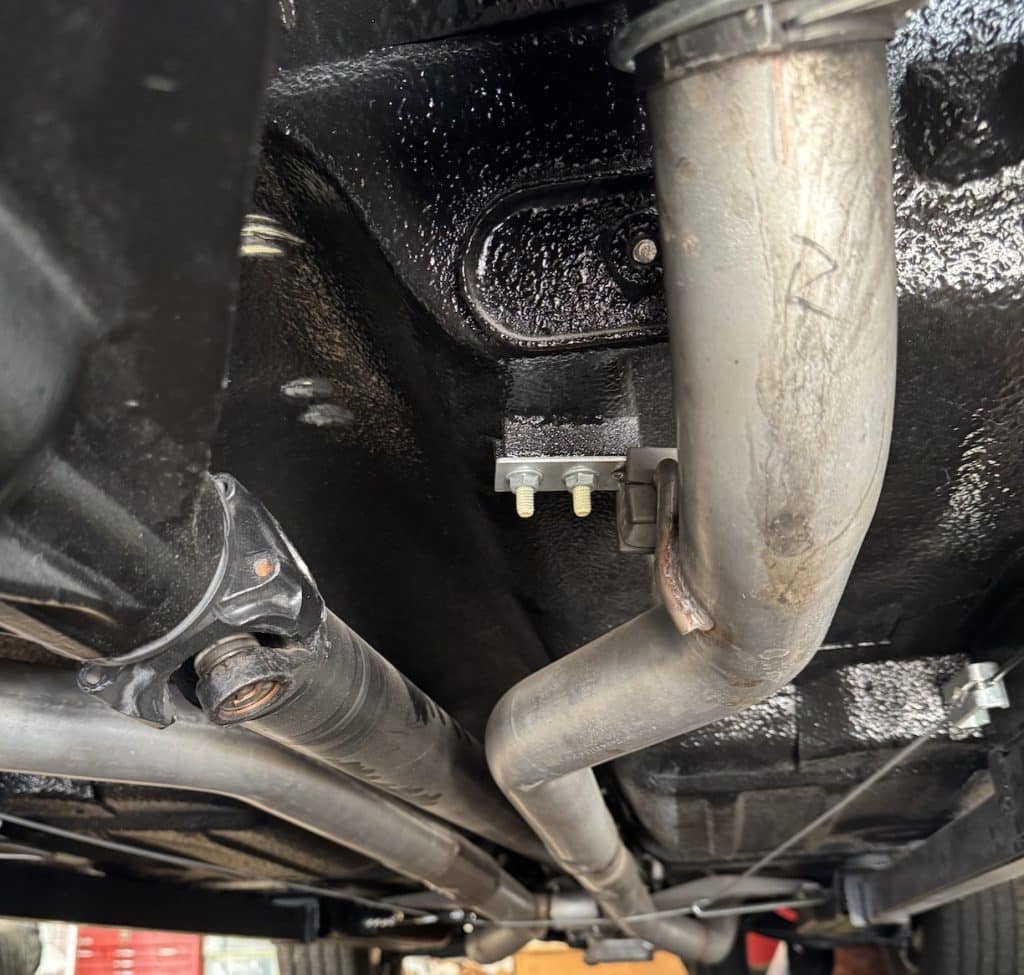
Running dual exhaust without a crossover (H-pipe or X-pipe) is a classic look—but not the best for performance. A crossover balances exhaust pulses, increasing low-end torque and smoothing out the engine rhythm.
Add a quality muffler and proper pipe diameter (not oversized), and you get a deep tone without drone. It’s not just about sound—it’s about drivability.
Handling & Road Control Upgrades
Let’s be honest—classic cars weren’t engineered with handling as a top priority. Bias-ply tires, soft springs, overboosted power steering (if you had power steering at all), and 50-year-old suspension parts don’t inspire much confidence.
These upgrades don’t turn your ride into a track car—they just make it feel planted and predictable on real roads.
16. Quick-Ratio Steering Box – Say goodbye to school-bus steering
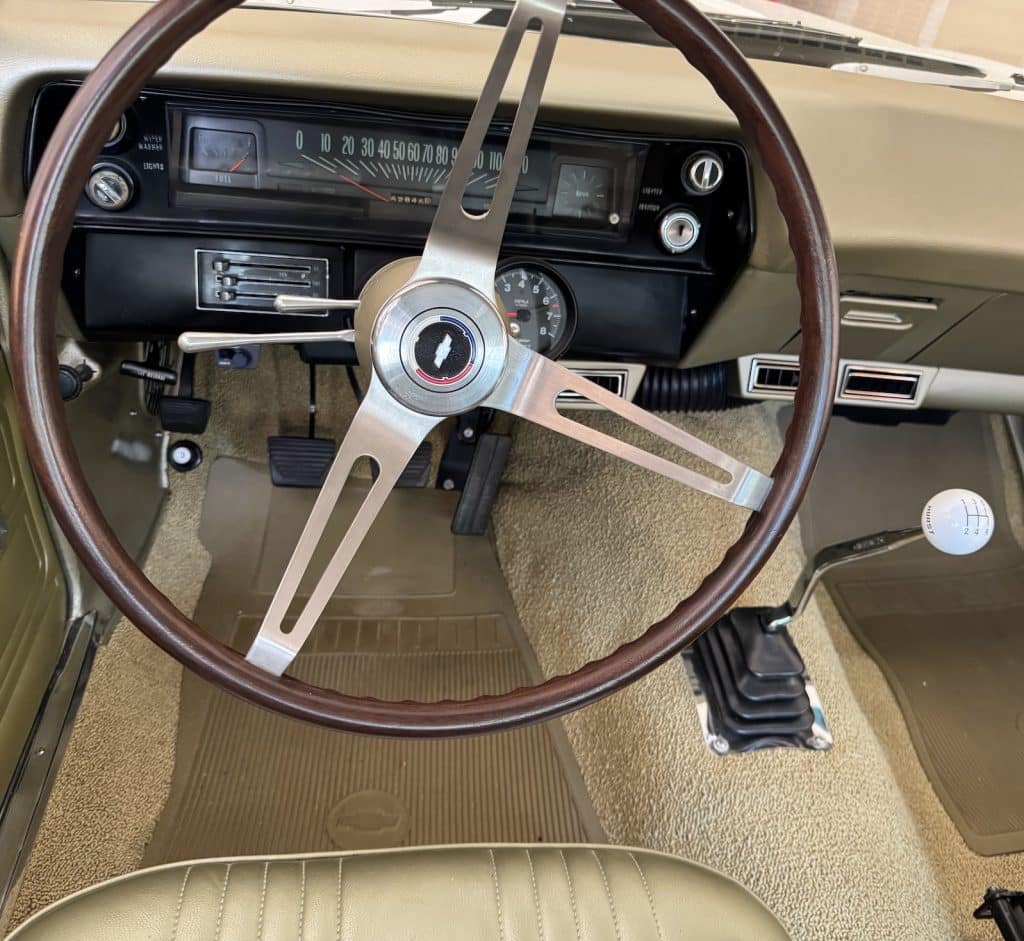
If you can spin your steering wheel half a turn before anything happens, your car doesn’t have “character”—it has worn-out steering.
A quick-ratio steering box tightens up response without making the car twitchy. Unlike rack-and-pinion swaps, it keeps the original steering layout and column, so it still feels like an old car—just a sharper one.
You’ll feel the difference before you even leave your driveway.
17. Performance Shocks – Control without killing ride quality
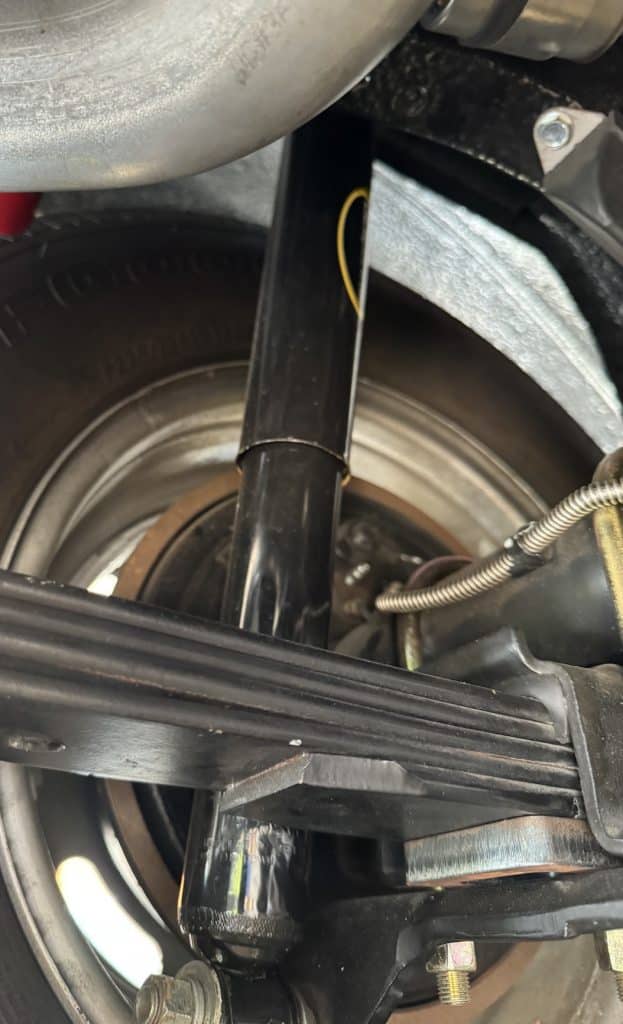
Classic cars tend to bounce and float over bumps because factory shocks were soft even when new. Five decades later, most originals are as useful as paperweights.
Modern gas shocks from companies like Bilstein or KYB improve stability immediately—no more wallowing through turns or nose-diving under braking. This is one of the biggest feel improvements per dollar you can make.
18. Front and Rear Sway Bars – Less body roll, more fun
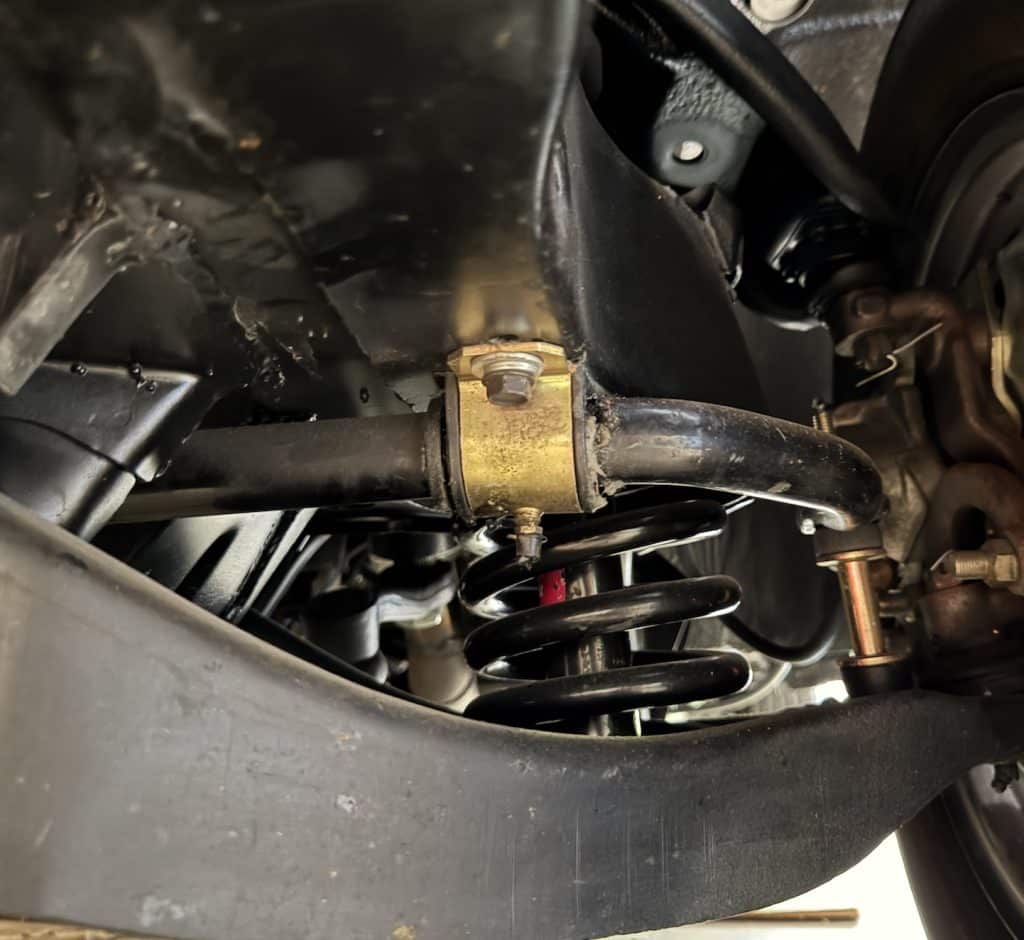
If your car leans like a fishing boat in a storm every time you take a corner, this upgrade fixes it.
Add a thicker front sway bar—and if your car doesn’t already have one, a rear bar too. This single upgrade dramatically improves cornering confidence without making the ride harsh. You keep the comfort of a classic, but gain the road feel of a modern car.
19. Polyurethane Suspension Bushings – Precision you can feel
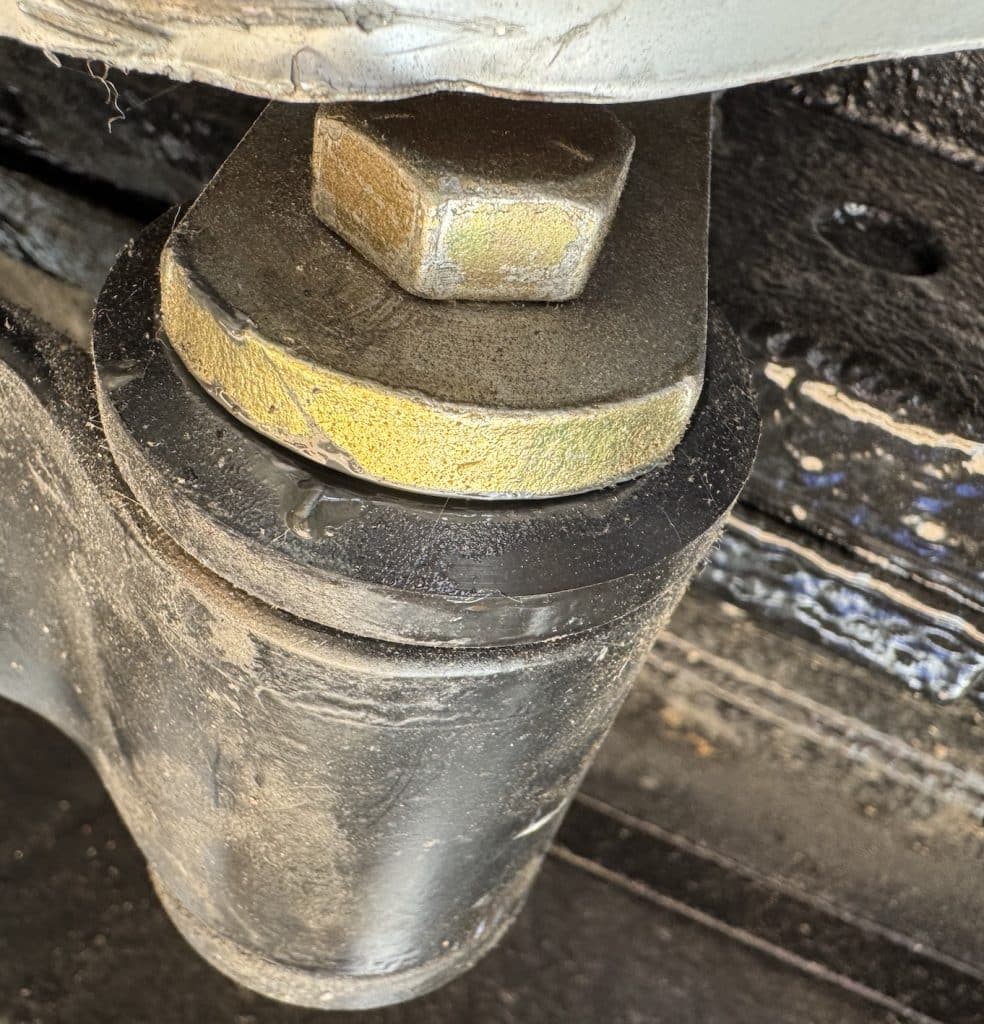
Even if you don’t want to go Poly, replacing 50+ year old rubber bushings can make a HUGE impact…
Rubber bushings flex and wear down over time. That movement translates to sloppy handling and unpredictable alignment.
Polyurethane bushings tighten everything up and transfer energy more efficiently through the suspension.
Go full poly if you want crisp handling, or mix rubber and poly for a comfort-focused balance. Either way, your car will finally go where you point it.
20. Modern Radial Tires – The single biggest handling upgrade you can make
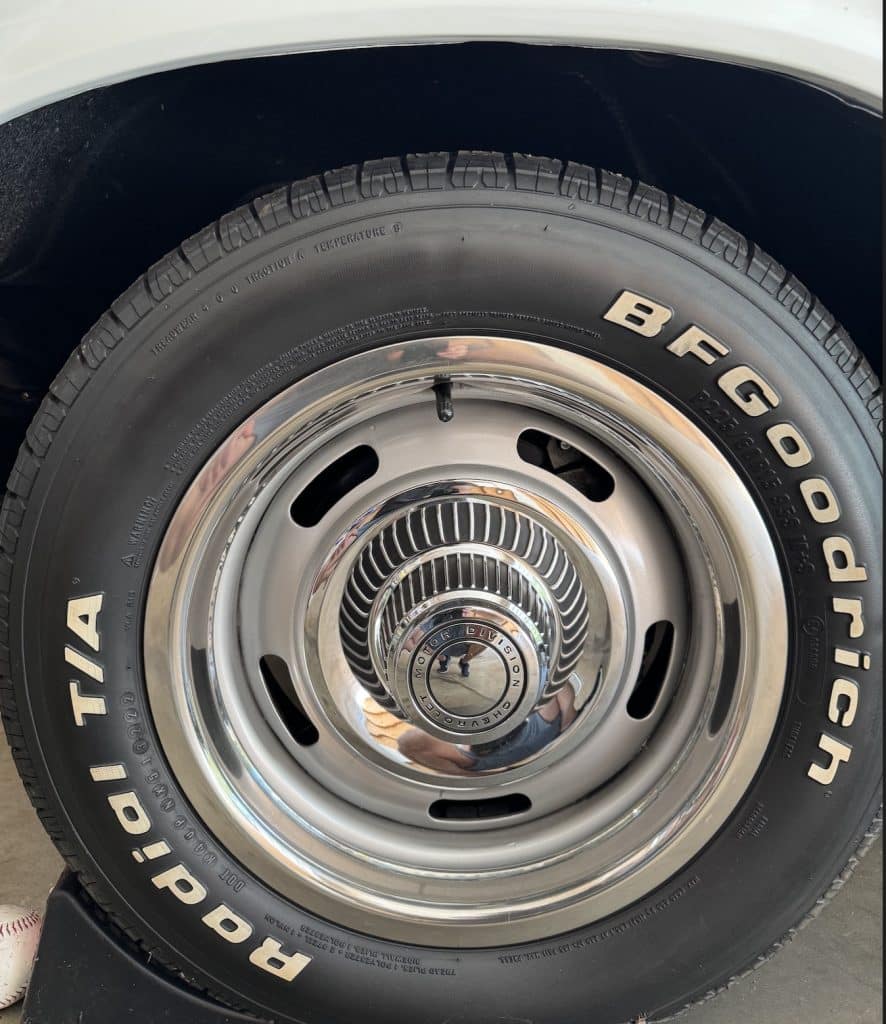
Bias-ply tires might look period-correct, but they handle like they’re made of hard plastic. Swapping to a good set of radials immediately improves traction, braking, and steering feedback.
This upgrade is so effective it should almost be mandatory if you plan to drive your car. You wouldn’t run drum brakes today—so why trust 1950s tire tech?
Comfort & Enjoyment Upgrades
A truly drivable classic isn’t just safe and reliable—it’s a place you actually enjoy spending time. Comfort upgrades don’t have to mean modernizing the car to death. Done right, they feel factory-clean and long overdue.
21. Sound Deadening – Quieter cabin, longer drives
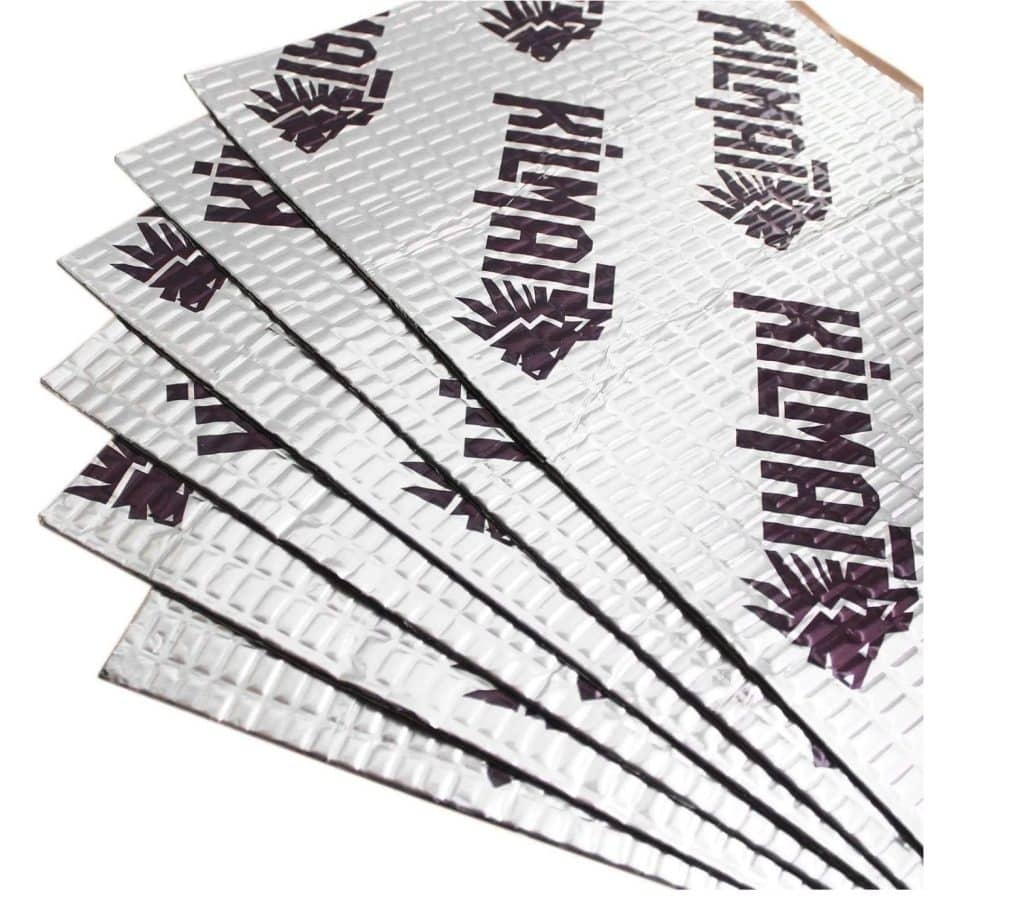
There’s a difference between hearing the engine—and listening to road noise beat you to death.
Adding sound deadening under the carpet, inside the doors, and on the firewall dramatically reduces cabin noise and heat. The car still sounds like a classic—it just stops wearing you out on long drives. Your ears (and passengers) will thank you.
22. Vintage Air A/C System – Summer driving without suffering
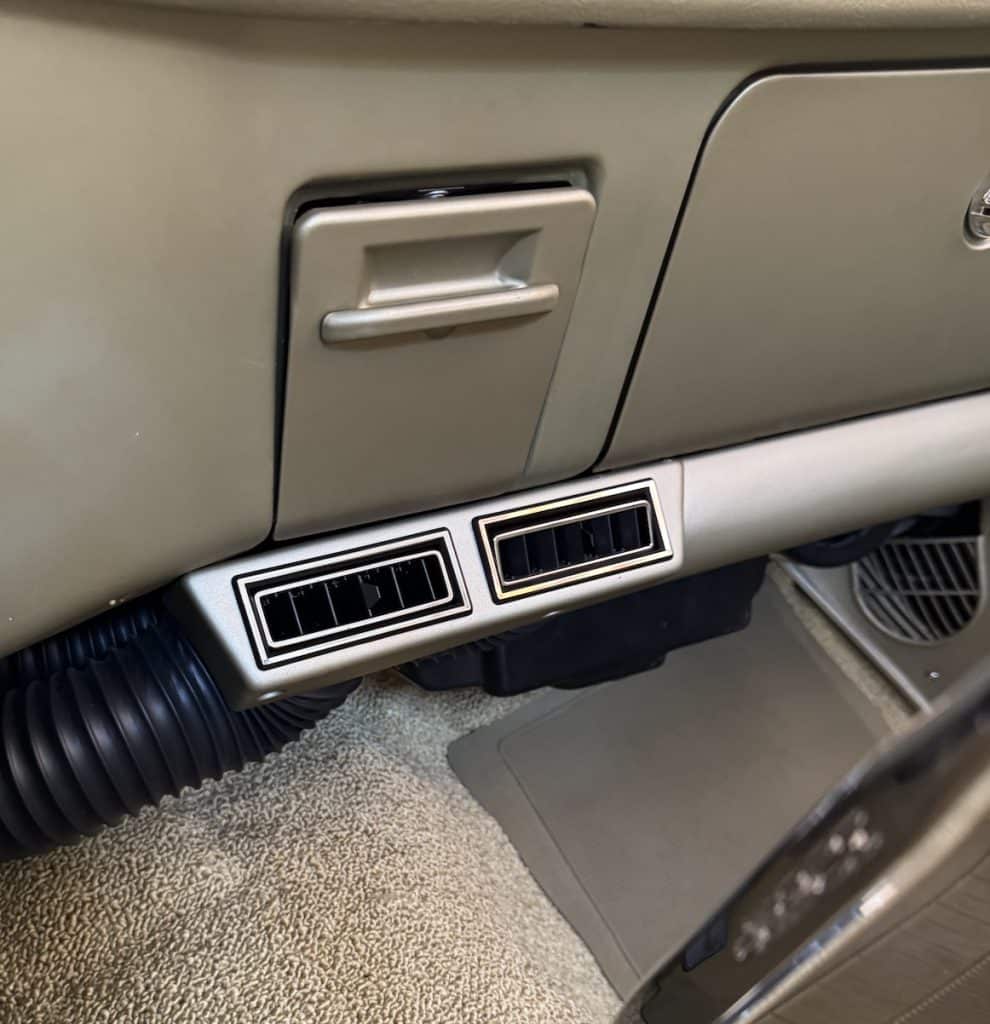
Factory A/C was rare in older cars—and even when it existed, it was weak and unreliable. A modern Vintage Air system tucks neatly under the dash and uses factory-style controls on many models.
Cold air makes a classic feel new again. This is one of the few upgrades that dramatically boosts comfort without hurting originality or style.
23. Supportive Seats or Foam Rebuild – Save your back
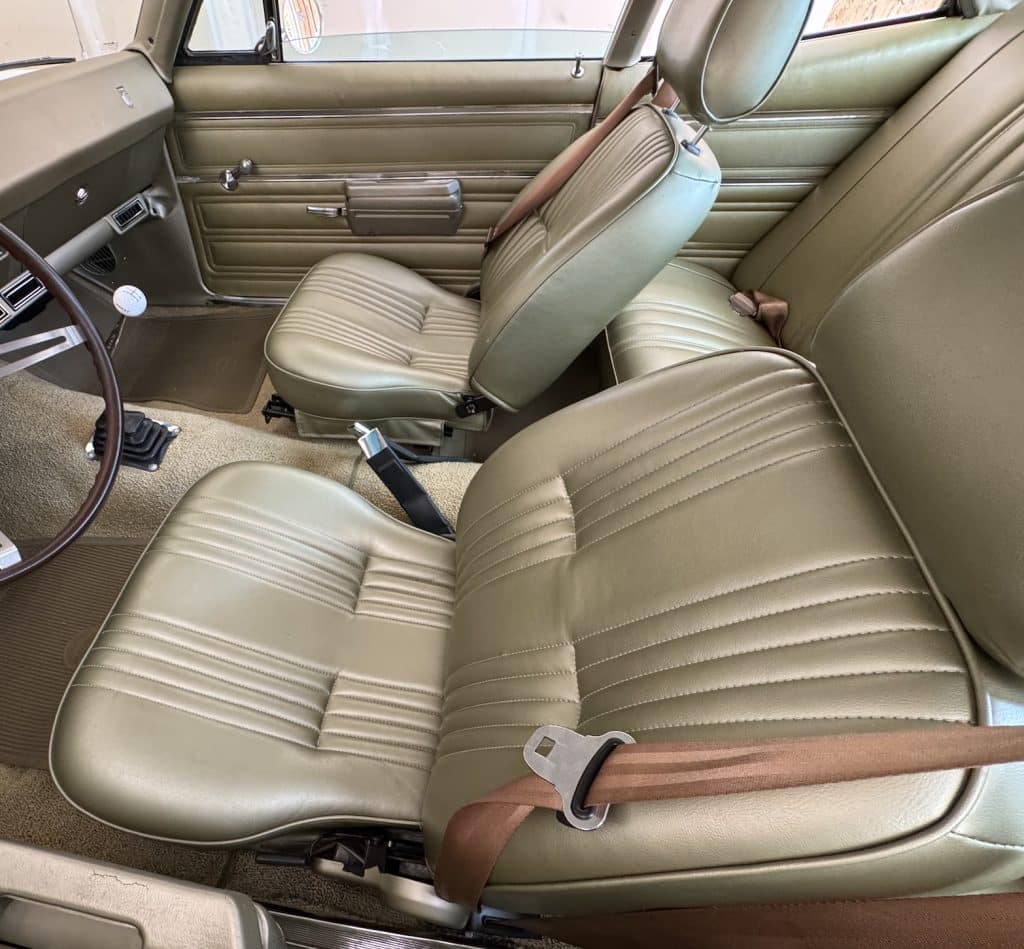
Let’s face it—many vintage bench and low-back bucket seats feel like a park bench wrapped in vinyl. You don’t need modern sport seats to be comfortable, but you do need proper support.
Rebuilding factory seats with better bolstering and fresh foam keeps the look original while adding real comfort. Your spine will notice the difference immediately.
24. Tilt Steering Column – Fit the car to the driver
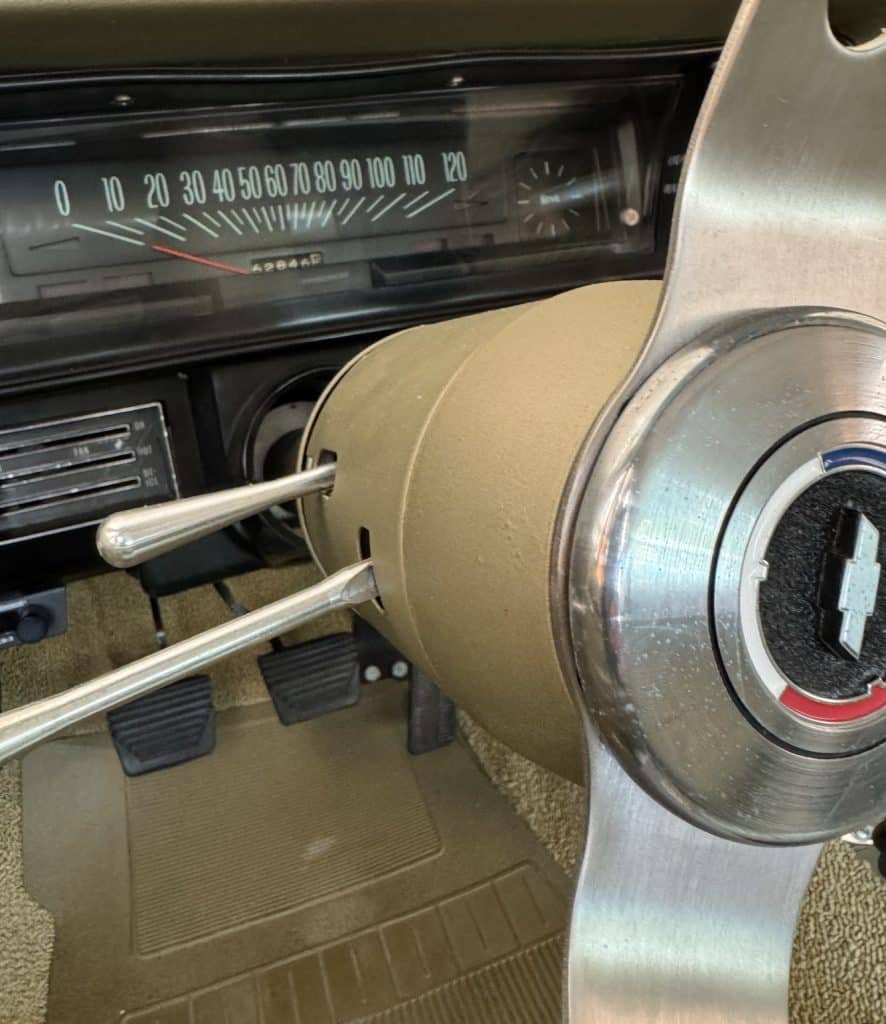
Most classics were built for one driving position: knees in the dashboard.
A tilt column makes it easier to get in and out, improves driving posture, and lets multiple drivers fit comfortably. It also adds a subtle layer of security—just pop the wheel up when you park. Simple upgrade, big difference.
25. Retro Bluetooth Stereo – Modern function, classic appearance
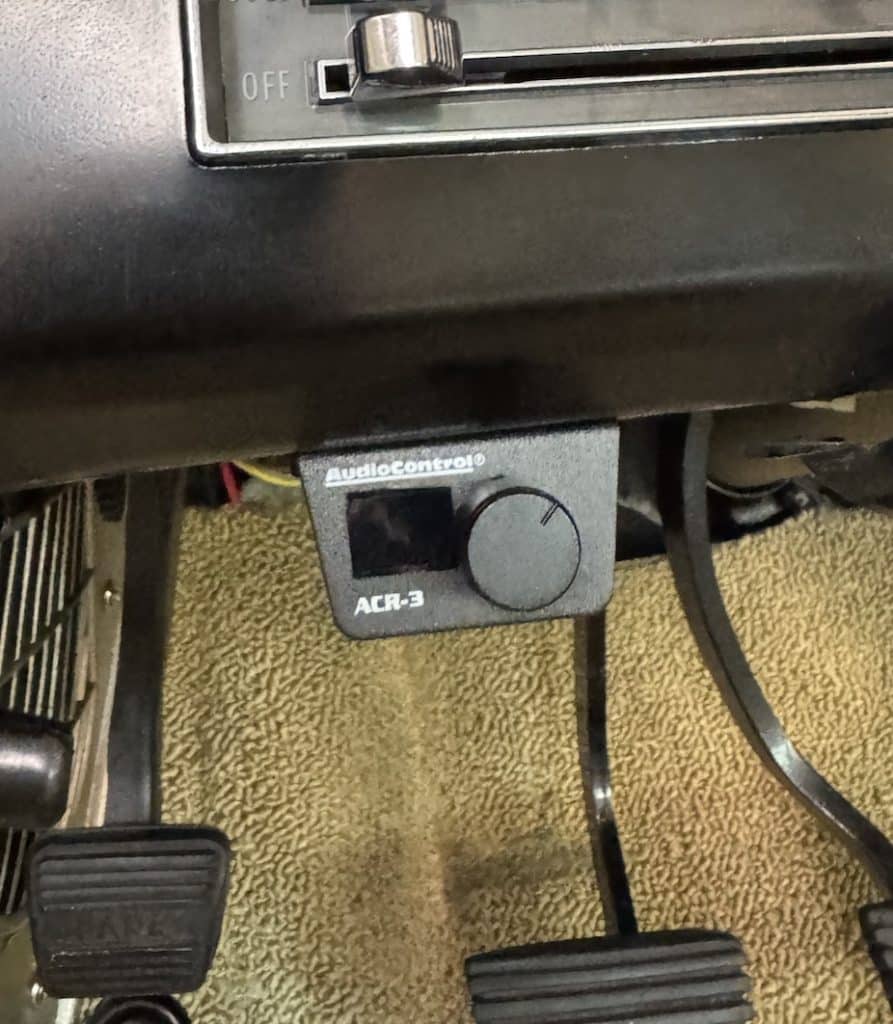
You don’t need a 12-inch subwoofer rattling the trunk. But being able to enjoy music—or GPS audio—without butchering the dash is a nice upgrade.
Retro-style head units look period-correct but offer Bluetooth, USB, and clean power for upgraded speakers. Long drives feel shorter when you’re not listening to AM static.
At the end of the day, a classic car should be driven—not quarantined in a garage waiting for perfect weather.
You don’t have to LS swap it or strip away its personality to make it roadworthy. These upgrades simply bring out the best in old-school engineering while solving the weaknesses that came with the era.
If you want reliability, confidence, and comfort without sacrificing the soul of your car, start with these 25 changes. Build it to drive—and enjoy every mile.

